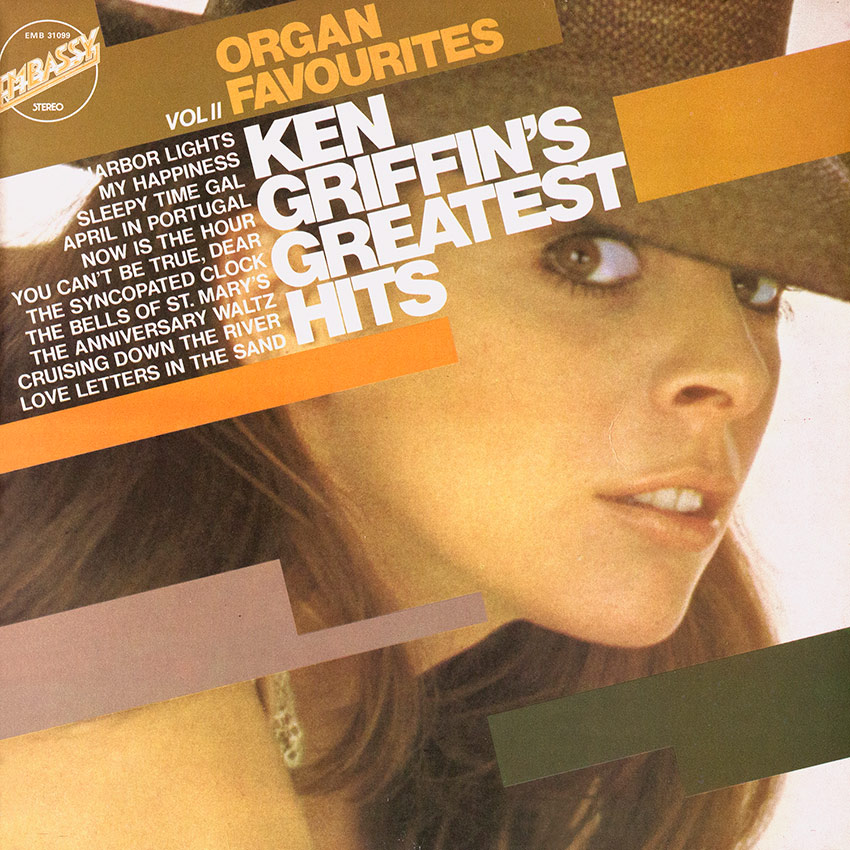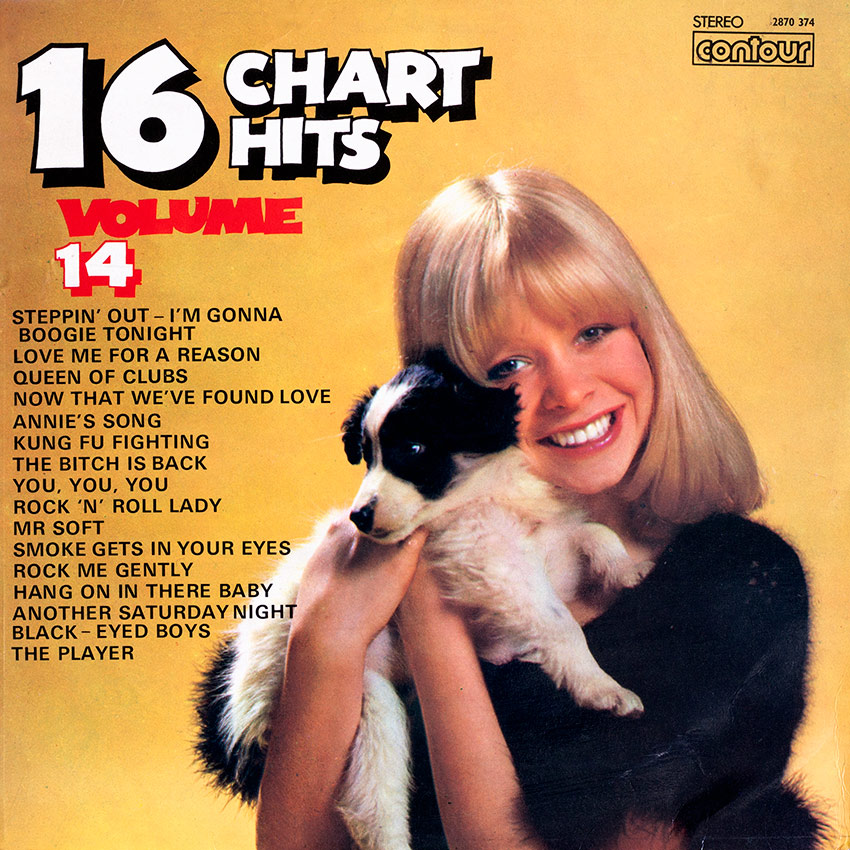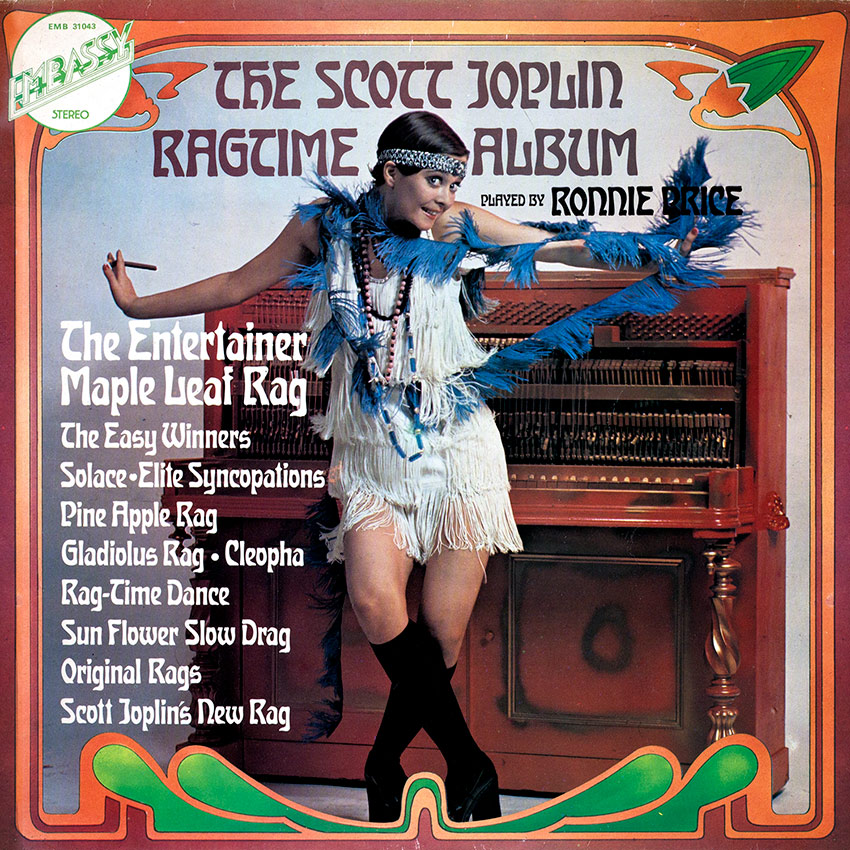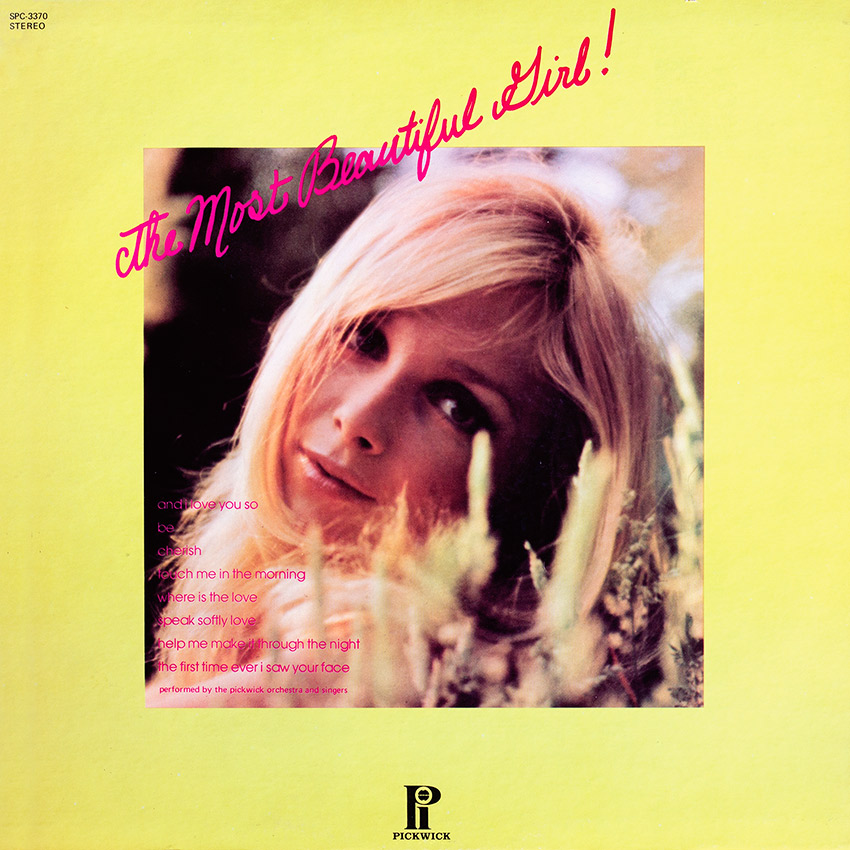Sauter and Finegan – Sleigh Ride
Sleeve Notes:
In the early fifties, Sauter and Finegan formed the original Doodletown Fifers and in 1961, United Artists invited them back into the studio and the result was this entertaining and expert set of tracks.
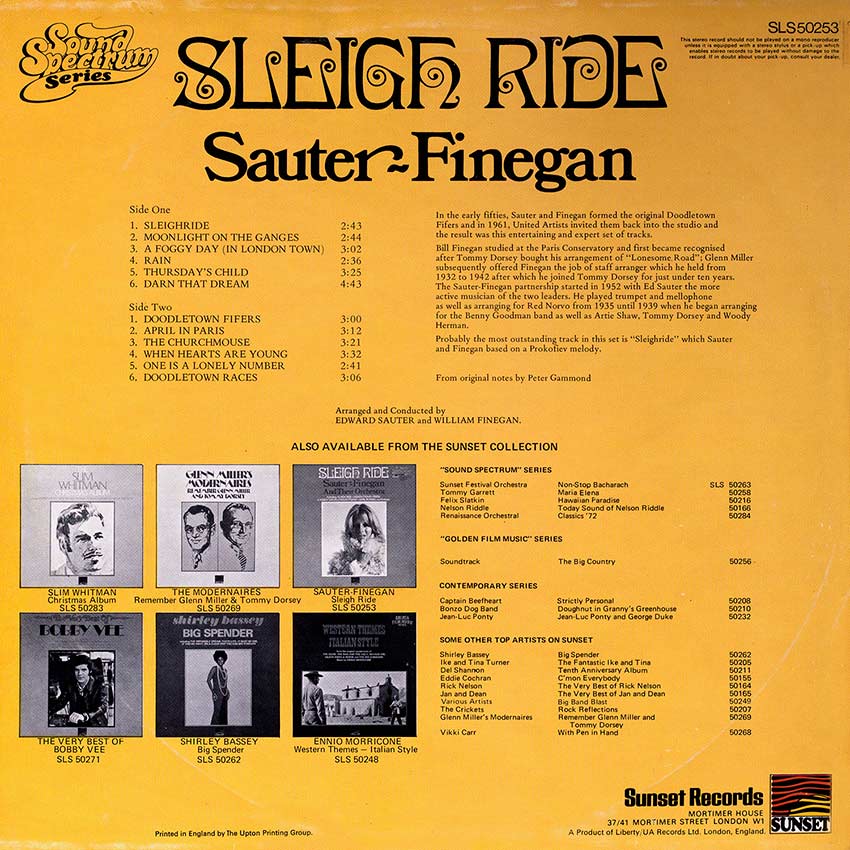
Label: Sunset Records SLS 50253
Country Giants Vol. 5
Sleeve Notes:
The artists performing on this album are amongst the all-time greats of country music, and between them they cover every style. From the happy welcoming voice of Porter Wagoner to the deep emotive tones of Waylon Jennings, via the plaintive Skeeter Davis and the smooth Jim Reeves, not forgetting the brilliant guitar picking of Chet Atkins. ‘Country’ music at its very best represented by artists who are some of country music’s best ambassadors, as demonstrated by their visits to the United Kingdom. The lovely Dottie West, a firm favourite at the Country Music Festival; Jerry Reed, who has a string of hits to his credit as well as having written several hit songs for other artists; Don Gibson, who besides having a fine voice, is also a well known songwriter; Dolly Parton, the beautiful lady of song, who in addition to her solo recordings, also duets with Porter Wagoner, and still finds time to compose. Finally, there is the immortal Jim Reeves, who became a legend in his life-time, but whose popularity still lives on nearly a decade after his tragic death. This then, is your opportunity to hear some of the finest country songs ever written, as presented by the musical ‘giants’ of country music, and happily this opportunity ‘knocks’ more than once.
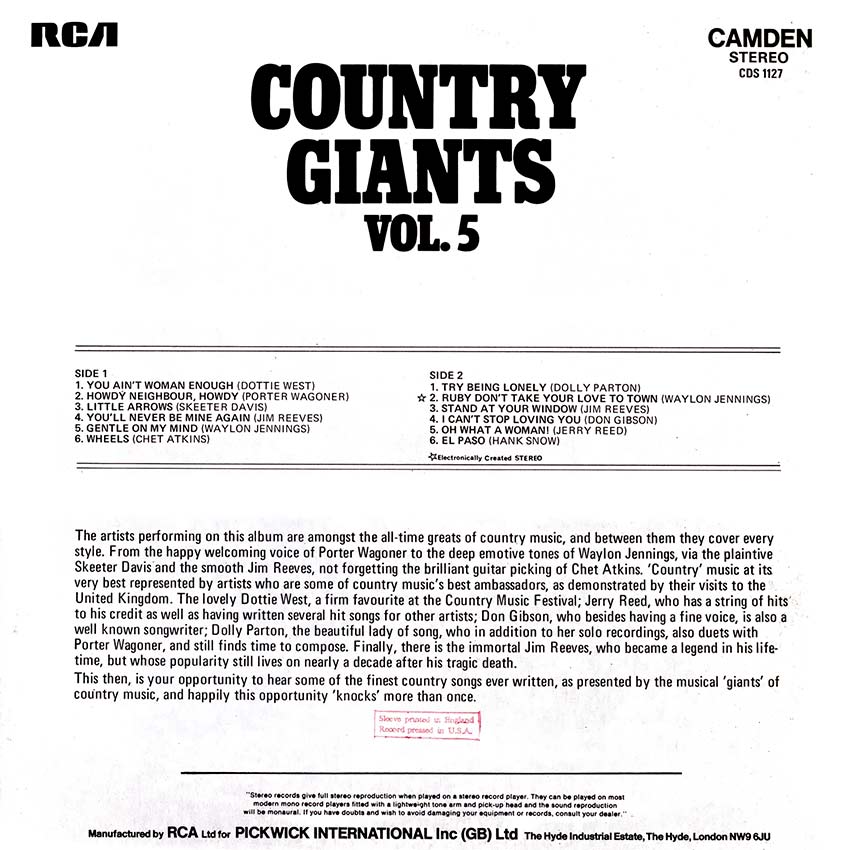
Label: Camden CDS 1127
Ken Griffin – Organ Favourites Vol. II
Sleeve Notes:
You Can’t Be True Dear, The Syncopated Clock, Love Letters In The Sand, My Happiness, April In Portugal, Cruising Down The River, Now Is The Hour, The Anniversary Waltz, The Bells Of St. Mary’s, Harbour Lights, Sleepy Time Gal
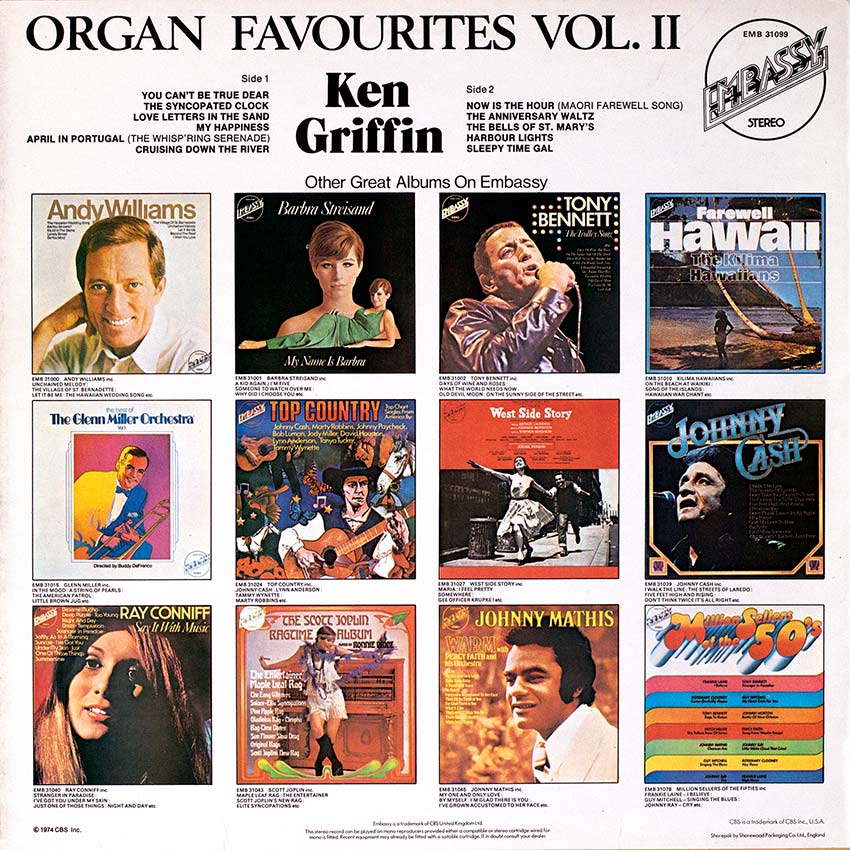
Label: Embassy EMB 31099
Top of the Pops Vol. 40
Sleeve Notes:
“What is the phenomenal release that will have legions of pop fans racing to their local record dealer or department store? Volume 40 of Hallmark Records’ Top of the Pops – a series, which since it was inaugurated six years ago has sold six and a half million records in the UK alone, more than half of those being sold in the last two years”.
No we’re not blowing our own trumpet. This was a quote from the 31st August edition of “Music Week” the leading Journal to the record trade. You want to hear more? yes? Right, here goes – from the same feature article.
“To a great extent, we have a regular buying clientele, although I think we are getting new customers all the time. Many people send us letters, telling us that for some reason or other they’ve lost or damaged one of the volumes, and would it be possible to obtain a replacement, otherwise their set will be incomplete. I’m sure that the Top of the Pops will continue as long as we give tremendous value for money and don’t go amiss with our choice of titles”.
We think this is enough to show what a great buying public we have for the longest-running, best-selling, regularly released album in the world.
Here’s Volume 40 – Enjoy it!

Hallmark SHM 875
16 Chart Hits Vol. 14
Sleeve Notes:
Steppin’ Out – I’m Gonna Boogie Tonight, Love Me For A Reason, Queen Of Clubs, Kung Fu Fighting, Smoke Gets In Your Eyes, Black – Eyed Boys, Rock Me Gently, The Bitch Is Back, Now That We’ve Found Love, You, You, You, Hang On In There Baby, The Player, Annie’s Song, Mr. Soft, Another Saturday Night, Rock ‘N’ Roll Lady
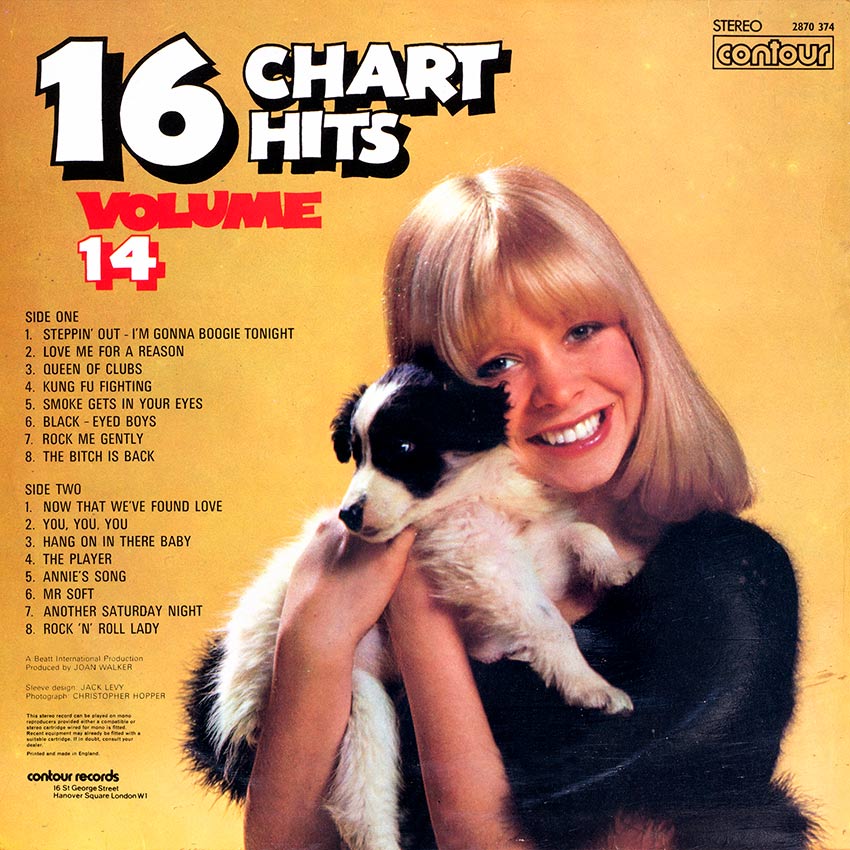
Label: Contour 2870 374
The Scott Joplin Ragtime Album played by Ronnie Price
Sleeve Notes:
Scott Joplin was born in 1868 and died in 1917 At the time of his death, on April 1st in the Manhattan State Institute, Joplin, who had been committed to the hospital in the autumn of the previous year by the second Mrs. Joplin, was not only virtually insane, but also penniless. It is incredible to note that even during his period in the hospital, he still tried to compose — but alas the magic had gone for ever.

Label: Embassy EMB 31043
The Pickwick Orchestra and Singers – The Most Beautiful Girl!
Sleeve Notes:
the most beautiful girl
This song made famous by Charlie Rich was No 1 on the Country And Western Charts for weeks.
and I love you so
This song written by Don McLean was made a hit by Perry Como.
be
Neil Diamond composed this great song for the movie Jonathan Livingston Seagull.
cherish
This song, made a hit by both David Cassidy and The Association, never loses beautiful freshness.
touch me in the morning
A beautiful song that only Diana Ross could have made a hit.
where is the love
Roberta Flack and Donny Hathaway recorded this song and it went right to the top of the charts.
speak softly love
The love theme from the movie “Godfather” made famous by Andy Williams.
help me make it through the night
Only, writer and composer, Kris Kristofferson could have written a song as meaningful as this.
the first time ever I saw your face
Roberta Flack’s touching rendition of this song was a smash hit.
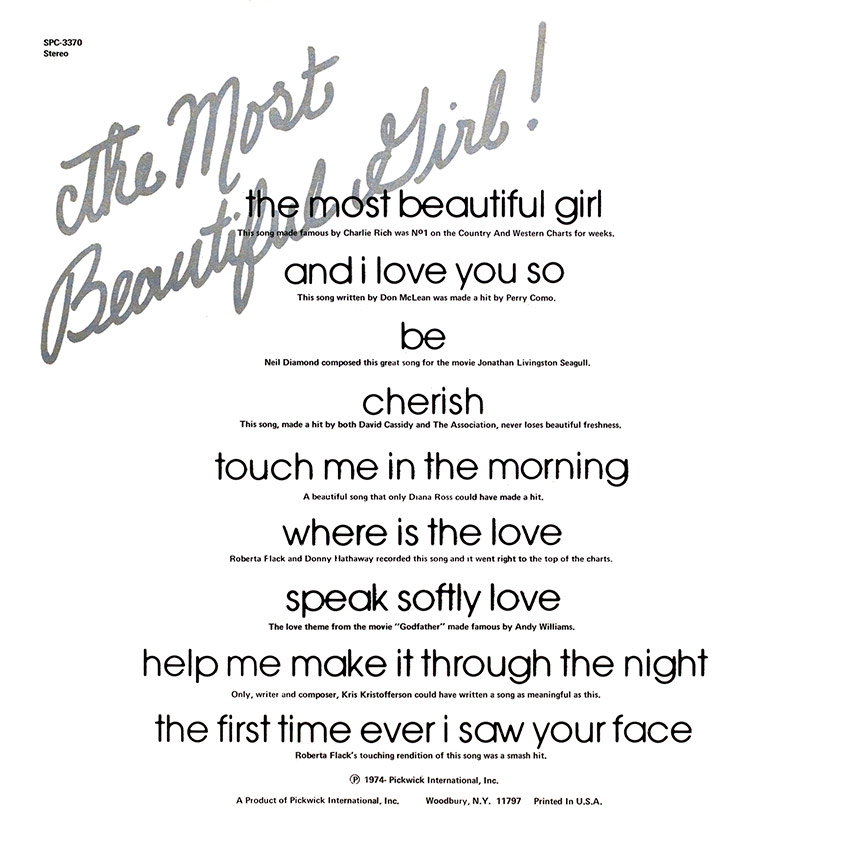
Label: Pickwick SPC-3370
Lalo – Symphonie Espagnole
Sleeve Notes:
SIDE ONE
Lalo Symphonie espagnole, op.21 First movement: Allegro non troppo Second movement: Scherzando. Allegro molto Third movement: Intermezzo. Allegretto non troppo Fourth movement: Andante
SIDE TWO Lalo Symphonie espagnole, op.21 Fifth movement: Rondo. Allegro Paganini Introduction and Variations on “Nel cor piu non mi sento” Paganini Fantaisie on “Dal tuo stellato soglio”
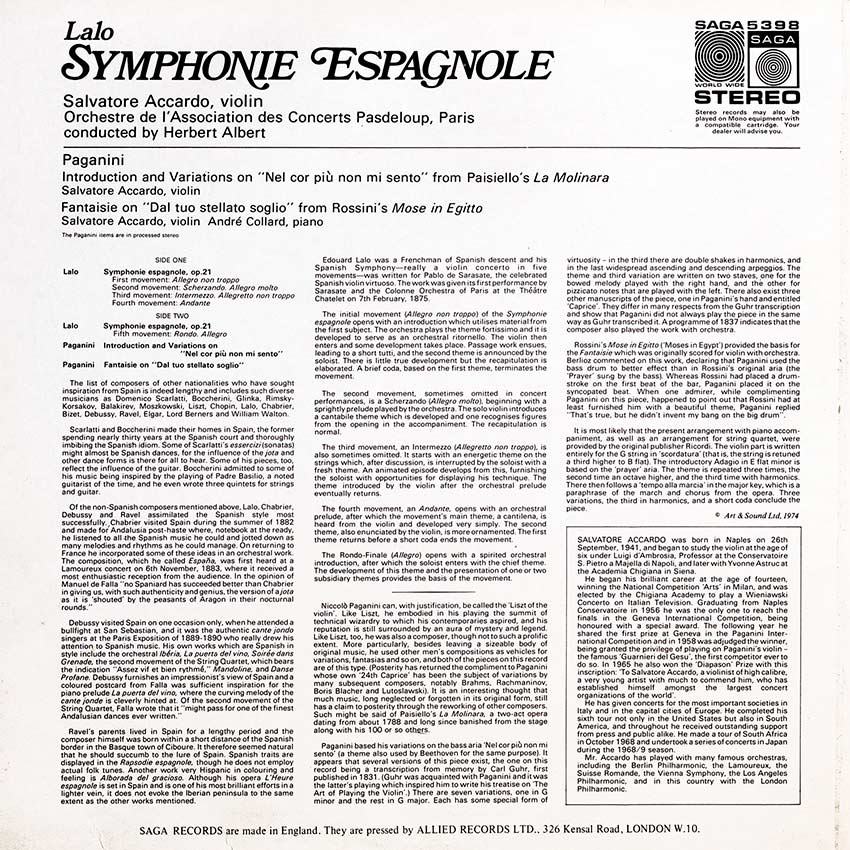
Label: Saga 5398
Ray Conniff His Orchestra and Chorus, The Happy Beat of
Sleeve Notes:
Way back in 1956 when Ray Conniff was employed in the Artist and Repertoire department of CBS Records in America, he hit upon the idea of blending voices and instruments in a way that was unique then and still is, and has subsequently become his musical trade mark.
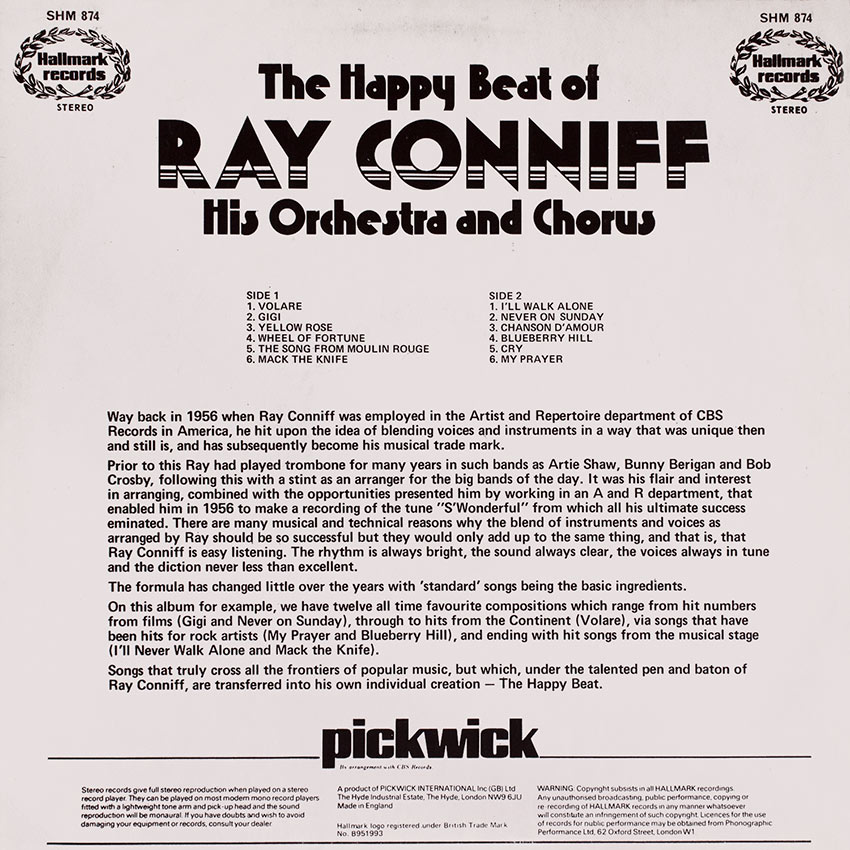
Label: Hallmark SHM 874





